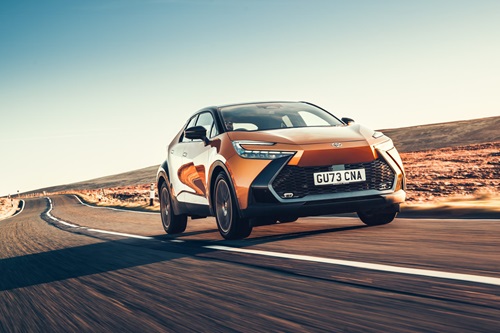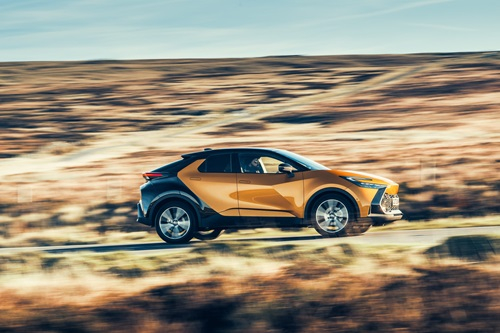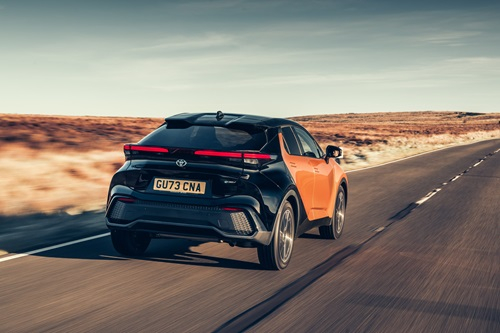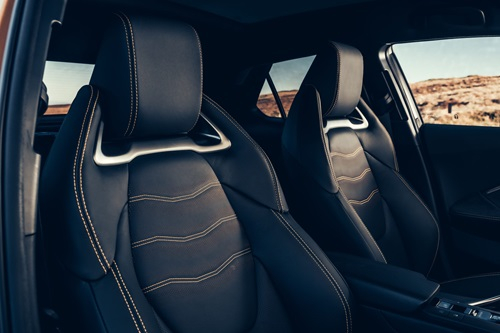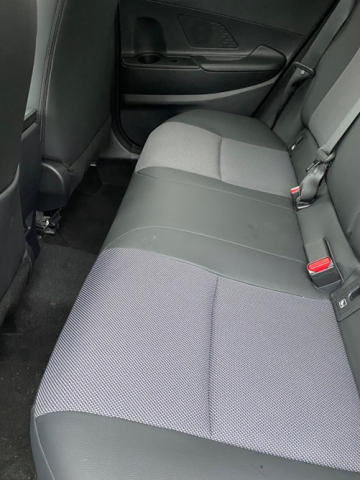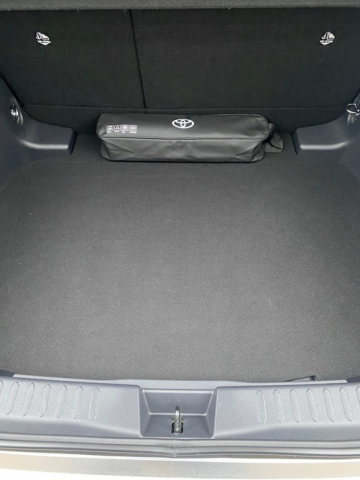Dramatic styling marked the 2016 arrival of the Toyota C-HR compact SUV and now that’s been facelifted and given a technical make-over inside as well.
Toyota’s Coupe-High Rider, to give it the full title, is one of the brand’s best selling models in Britain and has hit the sweet-spot in showrooms over the last eight years but with newer rivals sweeping in there was a need to modernise the model.
Building on the strengths of the original car, the 2024 Toyota C-HR now gets subtle styling changes to the bodywork while the really significant signature features are now seamless connectivity, responsive and powerful multimedia with a digital and customisable instrument display, the latest Toyota Safety Sense and driver assistance systems.
On higher grade models, the climate control system incorporates nanoe-X air quality technology to combat viruses, bacteria and odours in the cabin. Other advanced features available according to models include a new panoramic roof with thermal glass, dispensing with the need for a sunshade, and a digital rear-view mirror.
Five trim levels are, Icon, Design, Excel, GR Sport and Premiere Edition from £31,290 to £42,720 using 1.8 or 2.0 litre hybrid petrol electric engines. The GR Sport 4WD, which uses an electric motor at each end, and limited edition Premiere versions push prices over the tax-bashing 40K mark so an Excel is probably advisable to cut tax costs.
Our 1.8-litre £38,150 FWD test car had the optional Tech pack with a digital key, head-up display and digital rear view mirror in addition to the Excel’s 19-inch machined alloys, bi-tone exterior paintwork, front sports seats with suede-effect upholstery, ambient interior lighting with a wide choice of colour settings and a panoramic roof.
A Panoramic View Monitor provides 360-degree imaging of the car’s immediate surroundings for safe and accurate manoeuvring and the Toyota Safety Sense package is extended with Lane Change Assist, Front Cross Traffic Alert and Adaptive High-beam System headlights. Cornering lights and a driver monitor camera are also provided along with an optional higher quality sound system.
This is the fifth generation of the acclaimed Toyota petrol-electric hybrid system and is refinement is remarkable when matched to the continuously variable transmission. The highly sophisticated computer control decides when is the best time to run in electric mode whether starting off, accelerating or cruising and you never have to worry about range anxiety as the petrol engine is there and good for hundreds of miles while it also recharges the on-board traction battery as well as topping up from the brakes during deceleration. It’s a win-win formula.
The powertrain was very smooth with good pickup across the range, modest fuel consumption and generally quiet unless you pressed it into the higher rev band, and there was no transmission noise.
Steering was nicely balanced between assistance and effort with good feedback through bends, easing into parking spots or at motorway speed. I liked the light yet powerful brakes underfoot with the very progressive build up and the parking brake securely held it on our regular test slope even heavily laden.
Secondary controls around the steering column and on the wheel spokes needed familiarisation but were close to fingers and I liked the decision to place the heating and distribution controls on a panel beneath the infotainment display screen. The driver’s essential instruments directly ahead of the wheel were big, clear and easily changed when the different power modes were selected or particular features were brought up to check settings.
The heating and ventilation system was easy to use, effective and had good output throughout the cabin and backed up with powered windows.
Oddments room was good, not exceptional for a family car rear seat users and the nominal bootspace was small unless you progressively dropped the back seats. There’s also a high lip over which to lift items instead of being able to slide them into the bootspace.
Access for users was very good infront, a bit tighter into the back seats and the coupe profile restricted what could be seen from the rather flat, shapeless back seats. Infront the seats were better shaped and sporting in the Excel trim.
Room was good infront unless very tall and some might find the backseat legroom restricted and consider it really only a four seater for longer trips.
All noise levels were modest, the most noticeable being road rumblings and a busy engine under load.
Performance was fairly good but not exceptional in this class, however the way it drove, responded and gripped was safe and surefooted.
The Toyota C-HR looked well made with neatly finished interior and exterior panels, particularly smart highlight finishes infront but more basic in the back.
The new steamlined connectivity and infotainment features all worked well, clearly displayed and instantly changed whether using Apple or Android phones and the sound reproduction was remarkable for a car of its size. Toyota has done a very good job in bringing this modern classic up to date.
FAST FACTS
Model: Toyota C-HR Excel 1.8 FWD
Price: £38,150
Mechanical:1.8-litre,120bhp,4cyl,petrol-hybrid,front wheel drive CVT
Max Speed: 106 mph
0-62mph: 10.2 secs
Combined MPG: 46
Insurance Group: 22
CO2 emissions: 110gkm
Bik rating: 27%, VED £175FY, £170SR
Warranty: 10 yrs/ 100,000 miles
Size: L4.37m, W1.84, H1.57m
Bootspace: 310 to 388 litres
Kerbweight: 1542kg
For: Comfortable ride with great front seats, reasonable performance, excellent build quality and useful technology, good agile and surefooted handling
Against: Small boot for family car, busy engine note when pressed, background road noise, shapeless back seats, some blindspots without rear camera view. By Robin Roberts Miles Better News Agency
